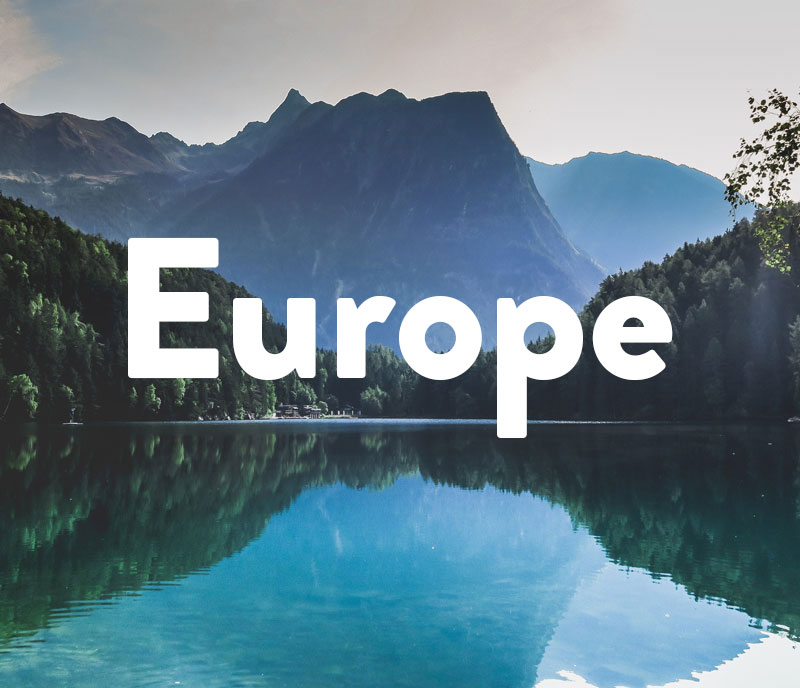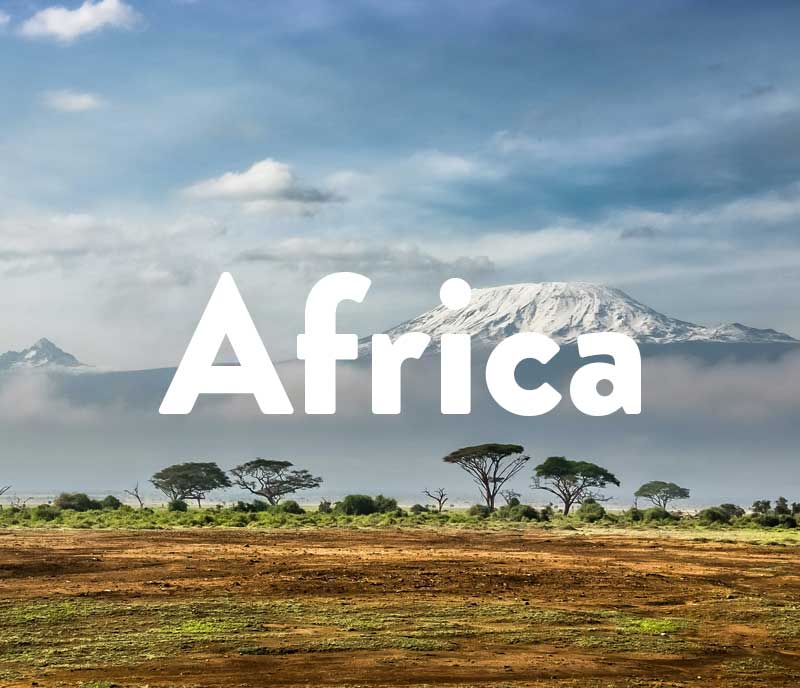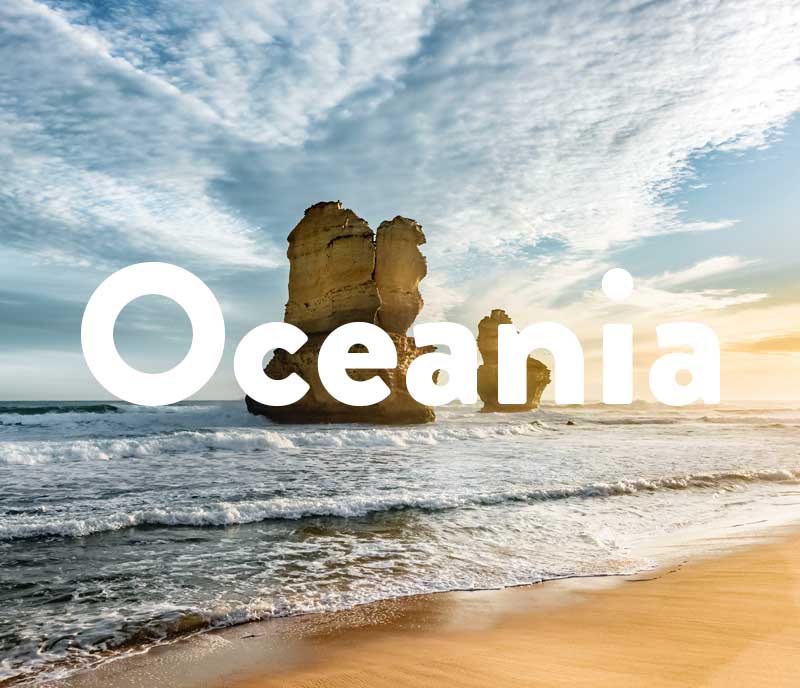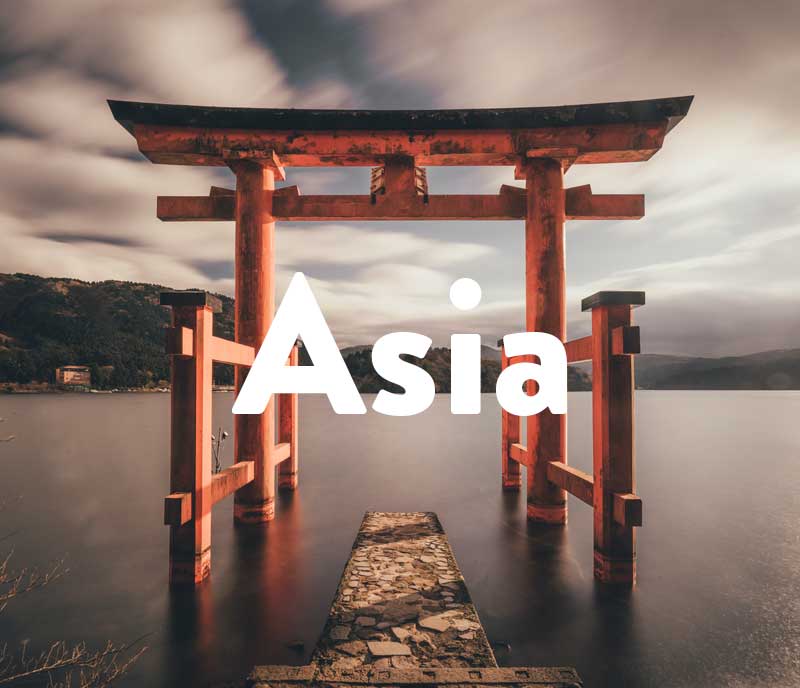North Korea is a unique, albeit atypical, vacation destination. It is one of the most isolated countries in the world. But maybe that’s what makes it so attractive to adventurers. Gaining insight into North Korea’s extraordinary political and social system is quite special – not to mention that the country also has beautiful landscapes.
Currently, traveling to North Korea is mostly only possible as part of organized package tours through limited tour operators. Korean guides and drivers are always on hand to accompany vacationers. In addition to the capital Pyongyang, visits to Buddhist temples and the Myohyang Mountains are usually on the program.
Table of Contents
- The Key Info
- The Country in Numbers
- The Five Largest Cities
- Top Tourist Attractions
- When To Travel
- Safety for Travelers
- Important Holidays
- Visa
- Currency
- Packing List
- Dos and Don’ts
- Secret Blogger Tips
- Top Instagrammable Places
- Fun Facts
Dive into our (free) travel guides below!
.
.
.
.
.
.
.
.
The Key Info
The Democratic People’s Republic of Korea (DPRK), the official name of North Korea, borders China to the north and South Korea to the south. There is also a small strip of border with Russia in the north. To the west of the country lies the Yellow Sea and to the east the Sea of Japan.
With an area of 120,538 km² and around 25.5 million inhabitants, North Korea is a small to medium-sized state in East Asia. What stands out about North Korea is its government. Officially, it’s a democratic republic; in reality it’s a communist dictatorship.
The interior of the country is sparsely populated (and mountainous), and the large cities are on the west and east coasts of the country. The capital Pyongyang, for example, is on the west side of the Yellow Sea.
Over 60% of the land is forested.
North Korea in Numbers
- Population: 25.5 million
- Total area of the country: 120,538 km²
- Capital: Pyongyang
- Currency: North Korean Won (KPW)
- Official language: Korean
- Religion: Free practice of religion is suppressed, and there are currently no precise statistics on the religious affiliations of the residents. The traditional religions are Buddhism and Confucianism. Christians are also represented.
The 5 Largest Cities in North Korea
#1 Pyongyang
Pyongyang is North Korea’s model city and, with 3.04 million inhabitants, also the largest. Here, you can marvel at gigantic monumental architecture such as the Arch of Triumph or Kim Il-sung-Square. North Koreans are particularly proud of the metro, supposedly the deepest underground train in the world. The socialist mosaic decorations in the train tunnels are eye-catching.
Tip: Some providers offer bike tours through Pyongyang.
#2 Hamhŭng
On the east coast is Hamhŭng, which with 668,557 inhabitants, is the second largest city in North Korea.
If Hamhŭng is part of your travel program, you might enjoy a visit to Tonghung Hill. The Kuchon Pavilion on the top of the hill is a historic watchtower, now popular with art students as a motif.
#3 Ch’ŏngjin
667,929 people live in Ch’ŏngjin, which is also found on the east coast of North Korea. In the vicinity of Ch’ŏngjin there are impressive waterfalls that are worth seeing.
#4 Namp’o
Namp’o is a port city about 60 km from Pyongyang, which currently has about 450,723 inhabitants. A huge dam to regulate the water levels – called the West Sea Dam – is particularly pressive. A 15 km long dam wall and three large locks for ships characterize the dam.
#5 Wŏnsan
The population of the popular seaside resort of Wŏnsan is estimated at around 350,000. It is one of the few places where tourists are also allowed to swim. Songdowon Beach has gazebos, open-air theaters, and sports fields. A nearby park offers boat trips on an artificial lake.
TOP Tourist Attractions
#1 Monumental architecture in Pyongyang
Socialist countries often like to show their strength in gigantic buildings. This is the case in Pyongyang, where, in addition to typical Plattenbaus (large buildings made of prefabricated slabs), huge monuments, squares and memorials shape the cityscape. Among them are, for example, the Arch of Triumph, Juche Tower, Kim Il-sung Square and the monument to the founding of the party.
#2 Panmunjom
The end of the Korean War was negotiated in Panmunjom from 1951 to 1953. It is a military settlement in the Demilitarized Zone (DMZ) between North and South Korea. Panmunjom is the only place within the DMZ that foreign tourists are allowed to enter. On the other side of the 4 km wide border strip, another world begins, the world of the free market economy of South Korea. Panmunjom is a place reminiscent of the division of East and West Germany and will touch you.
#3 Myohyang-Gebirge
Those who want to relax away from all the ubiquitous state propaganda in the cities can relax a little in the idyllic Myohyang Mountains. Part of the tour here usually includes the Pohyon Temple, the largest Buddhist temple in North Korea. The entire mountain range was once considered sacred.
#4 Masik-Ryong Ski Resort
Ten ski runs of various levels of difficulty, a toboggan run, an ice rink and an Austrian (!) Lift system await you in the Masik-Ryong ski area near the town of Wonsan. The associated resort hotel has over 120 rooms, a pool and wellness area and, according to hearsay, even western shopping chains. The resort contrasts with the low standard of living of the general population in a bizarre way and is a showpiece of the current head of state Kim Jong-un.
#5 Rajin Markt
It is illegal to take photos of or in the Rajin market, but you can visit it. It is probably the only market that foreigners are allowed to visit in North Korea. Here you can get an insight into the North Korean trade and maybe even grab a bargain or two yourself. It is located in the Rason special trade zone, near the border with China and Russia.
Best Time to Travel
The climate in North Korea is characterized by hot, humid summers and cold winters with little rainfall. Annual precipitation falls mainly during the monsoon season (June to August). Organized tours usually take place in spring or autumn (when the temperatures are mild and pleasant) and on North Korean holidays.
Safety for Travelers
In North Korea, you should feel less concerned about falling victim to crime, than being classified as a criminal yourself. Life is dominated by omnipresent propaganda and foreign influences are seen as harmful and corrosive. For the slightest offence, you can expect severe penalties. You should therefore make sure to find out rigorously how to behave in North Korea before starting your trip.
North Korea is in a seismically active zone, meaning earthquakes are likely.
Typhoons occasionally hit the country in autumn.
The Most Important Holidays in North Korea
January 1st: New Years Day
February 16th: Kim Jong Il’s birthday
April 15th: Birthday of President Kim Il Sung
April 25: Army Day
May 1st: Labor Day
July 27: Victory Day
August 15th: Independence Day
August 25: Day of Songun
September 9th: Day of the Foundation of the Republic
October 10th: Party Foundation Day
December 27: Constitution Day
Visa for North Korea
The organization of a visa for North Korea is usually done via the tour operator. They apply for the visa at the North Korean embassy in your capital city. The application documents should be sent to the North Korean embassy in advance by post. The processing time is generally at least four weeks.
Currency
The national currency is the won (KPW). As a rule, however, visitors have nothing to do with the won. Tourists must bring the money for all planned on-site expenses in cash (and only in yuan, euros or US dollars). There are no ATMs or cashless payments. Credit cards and checks are not accepted. Sometimes even slightly damaged bills are refused.
Dos and Don’ts in North Korea
North Korea is a politically sensitive travel destination, in which pronounced and unspoken rules should be followed. You should consider the following points:
| Dos | Don’ts |
| Always observe prohibitions, signs and warnings as well as the instructions of your guide. | Under no circumstances address politically sensitive topics and do not express yourself politically in any way. |
| Expect that a lot (especially contact with locals) is staged for the tourist group and does not correspond to the real life of North Koreans. | Don’t ask critical questions. |
| Be prepared for cold rooms and sudden power and water failures in winter. | Do not take any German (or any Western) newspaper, Western music or Bible with you. |
| Accept that the whole trip is completely planned and that you cannot do something individually if you feel like it. | Don’t take photos unless the tour guide allows you to. All photos may be checked upon departure. |
| Bring gifts for the tour guide and drivers (cigarettes and cosmetics are popular). | |
| It is customary to lay flowers on certain statues as a sign of respect for the Supreme Leaders of North Korea. Your tour guide will point this out to you. |
Your Packing List Must-Haves
- Flashlight (in case the power fails at night)
- Sufficient euros and / or US dollars in cash
- Required medication in sufficient quantities
- Formal attire (when visiting some memorials, you may need to be properly dressed and may not appear in sneakers, jeans and a hoodie)
- Toiletries
- Gifts for tour guides and drivers
- Camera
- Mobile phone
- Universal power adapter
Secret Blogger Tips
Collecting insider tips for North Korea is of course a bit difficult given that the only option are planned tours. We still have a few small ideas!
- Moovingroovin recommends trying Korean beer and Korean rice wine (Soju).
- Spend a night in the luxury, pyramid-shaped Hotel Hyangsan in the Myohyang Mountains – I Packed My Backpack enjoyed it!
- Jeller went to the Arirang Festival in the stadium in Panmunjom – one of the biggest mass spectacles. Acrobats represent perfectly staged scenes from the history of North Korea.
TOP 7 Instagrammable Orte
- #pyongyang (106,961 posts)
- #panmunjom (6,510 posts)
- #juchetower (1,727 posts)
- #masikryong (255 posts)
- #archofreunification (188 posts)
- #monumenttopartyfounding (67 posts)
- #pohyon (29 posts)
Fun Facts about Nordkorea – Did you know…?
… that North Koreans have their own calendar, which starts with the year their founder was born in 1912? The year 2020 corresponds to the North Korean year 109.
… that on average only 4000-6000 Western tourists visit North Korea each year?
… that wearing blue jeans is illegal because they represent imperialism? Tourists are usually exempt from this rule, but citizens face labor camp if they are caught wearing them.
… that only that only “comrades” who are loyal to the line are allowed to live in the prestigious city of Pyongyang? Politically unreliable citizens are not allowed to do so. The ‘songbun‘ political system divides people into three classes of people who are deemed ‘core’, ‘wavering’ or ‘hostile’.
Keep discovering your bucket list countries…
- Winter city breaks 2024 — 10 wonderful destinations around the world
- Holiday at home — plan a relaxing autumn staycation
- Autumn photography — 10 tips for capturing seasonal snapshots
- Tips for your autumn trip — our autumn favourites
- City breaks in autumn 2024 — 8 unforgettable destinations across Europe







